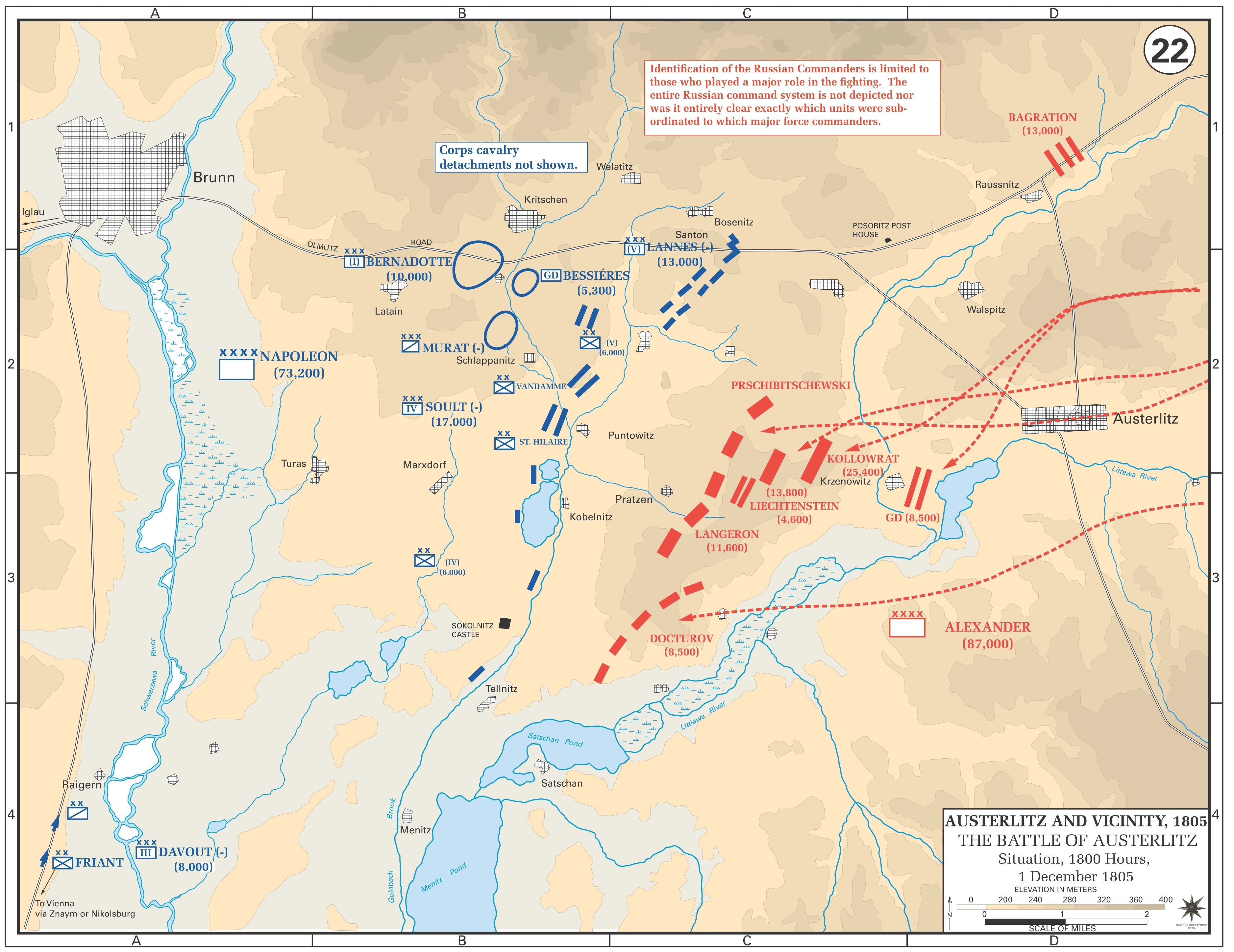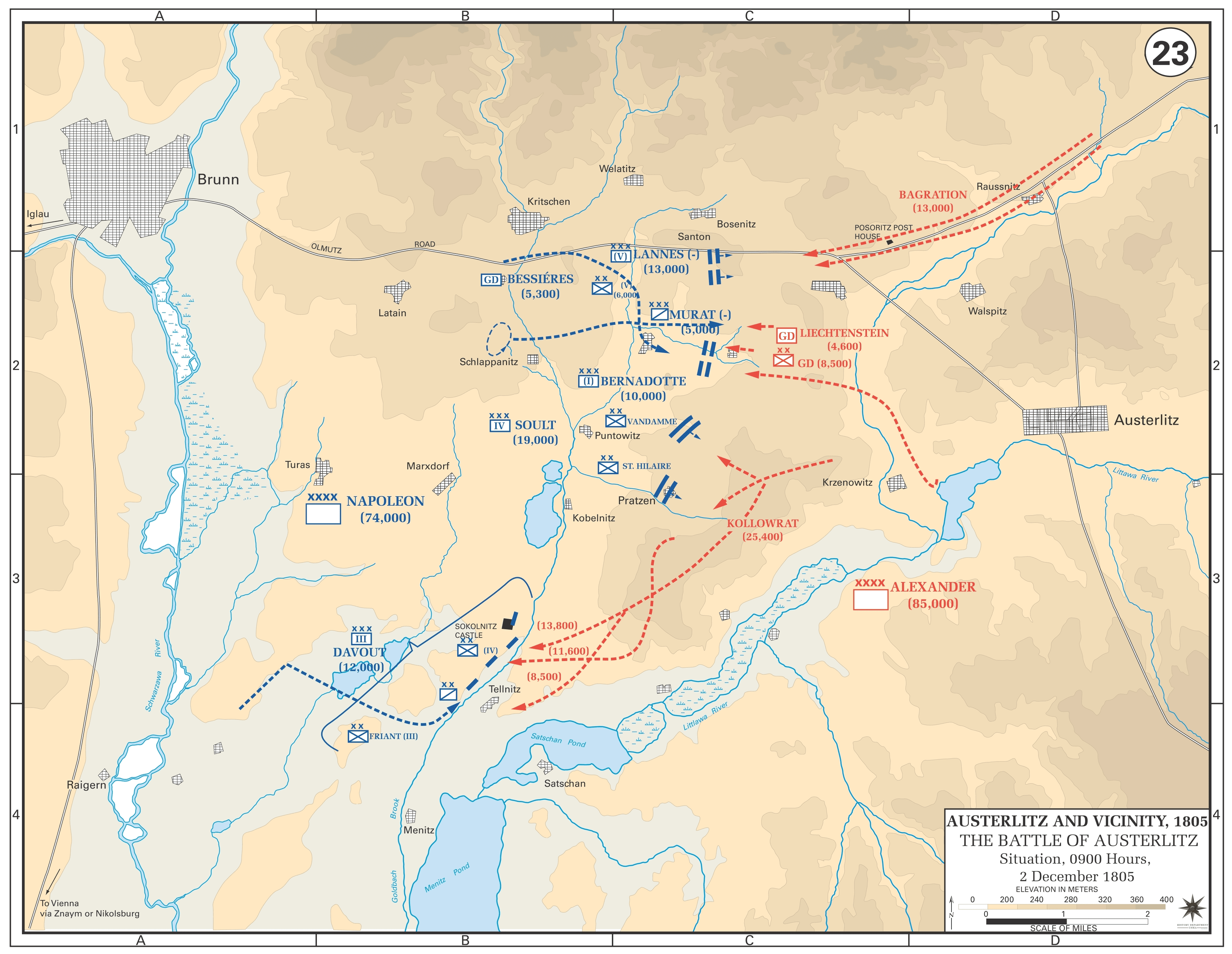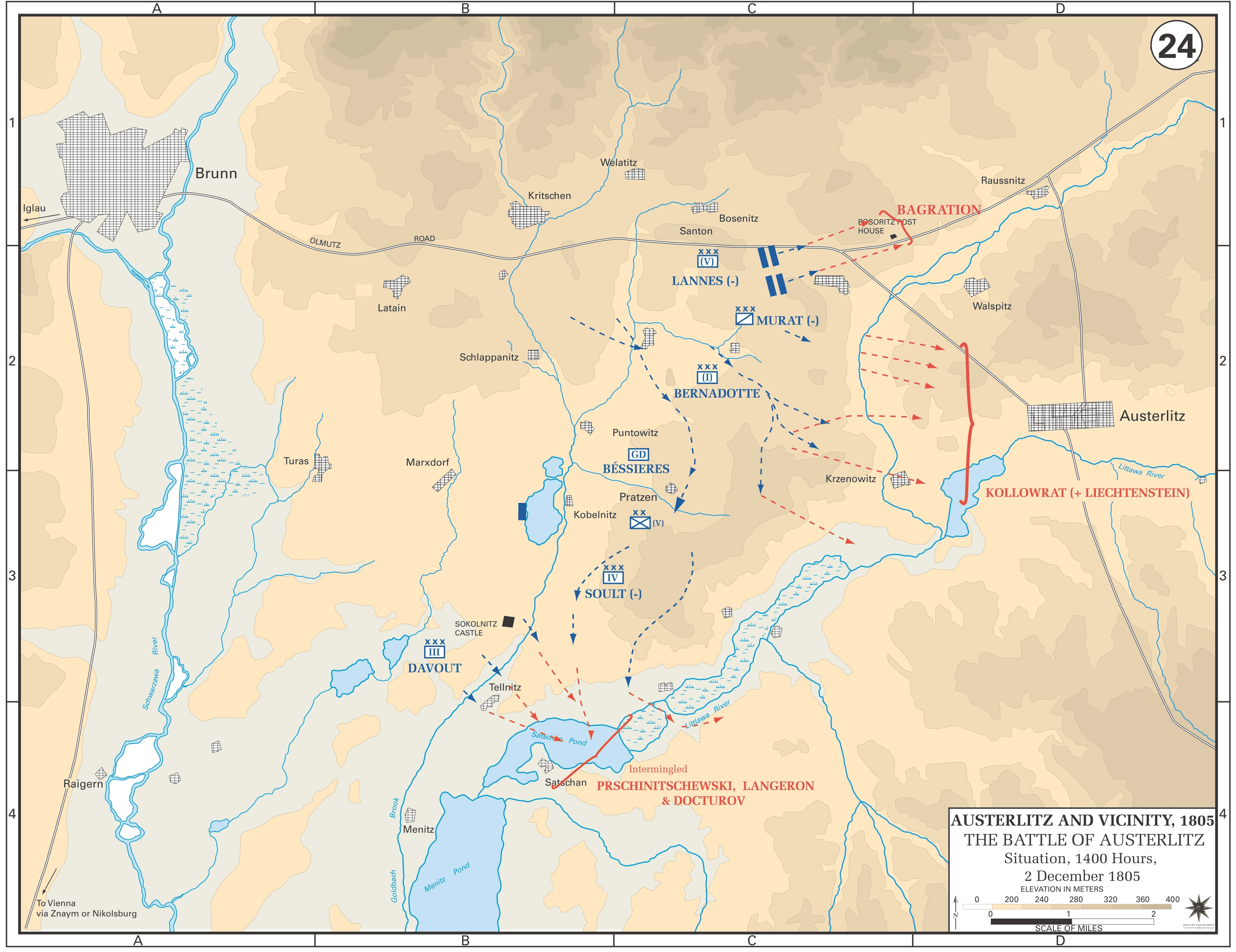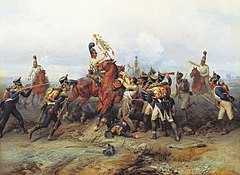The Sandman
MEMBER
Or also known as Battle of Austerlitz it is also said that this was the Napoleon's greatest victory.
The Battle of Austerlitz took place near the town of "Austerlitz" in Austrian Empire (Modern day Czech republic)
Background
Since the year 1790's Europe was in turmoil the French Revolutionary war was raging on. But in year 1797 the French one by one defeated the members of "First Coalition" (established in 1792) which was an alliance of Austria, Prussia, Britain, Spain, and a lot of Italian states the main aims of the first coalition was to either help Louis XVI or take advantage of revolutionary war and capture the parts of France for themselves.
In 1798 "Second Coalition" an alliance of "Britain, Austria, Russia, Ottoman empire, Portugal, Naples, various German monarchies and Sweden was defeated too by the French in 1801 although at first the coalition achieved many victories but ultimately were defeated and pushed back from French territories.
By 1802 French Revolutionary war was over 2nd coalition was defeated and Britain was now the only enemy remaining of the French republic but "Treaty of Amiens" finally brought peace to Europe. But despite this peace treaty the problems never ended and situation became so tense that once again war broke out between Britain and France in 1803. In 1804 Britain formed alliance with Sweden and in the same year Napoleon became the emperor of France by 1805 thanks to the diplomatic moves by British PM Russia joined the alliance and than finally Austria joined a few months later this became to known as "Third Coalition".
Prelude to the battle
On 20 Oct 1805 French defeated the Austrian forces under the command of General Mack at Ulm in the mean time Russian forces under command of Kutuzov crossed Danube advancing towards Ulm from west. French captured Vienna in Nov and tried to pursue the Kutuzov but he was able to outrun them to North and linked up with the more Russian forces under command of Buxhowden in Olmutz with the scattered Austrian forces, TSAR Alexander I (Emperor of Russia) and Francis II (Emperor of Austria). Napoleon followed the Russians but called a halt at Brunn (modern day Brno) south west of Russo-Austrian positions.
Numbers
French forces
Under the supreme command of French emperor Napoleon I
-French imperial guard (5,500 men and 24 guns)
-I Corps (13,000 men and 24 guns)
-III Corps (4,300 men, 830 cavalry and 12 guns)
-IV Corps (23,600 men and 35 guns)
-V Corps (12,700 men and 20 guns)
-Grenadier Division (5,700 men) this division was composed of elite companies.
-Cavalry reserve (7,400 sabres and 36 guns)
Total 64,800 men, 8230 cavalry and 151 guns
Forces of Third Coalition
Under the command of Tsar Alexander I and Emperor Francis II however field commander was Russian General Kutuzov and commander of Austrian forces was Lieutenant General Prince Johann von Liechtenstein.
-The Russian Imperial Guard (6,730 men, 3,700 cavalry, 100 pioneers and 40 guns)
-Advanced Guard of Tsar's Army (9,200 men, 4,500 cavalry and 42 guns)
-Advanced Guard of General Buxhowden (3,440 men, 3,440 cavalry and 12 light guns)
-First Column (13,240 men, 250 cavalry 40 light and 24 heavy guns)
-Second Column (11,250 men, 300 cavalry and 30 light guns)
-Third Column (7,700 men and 30 light guns)
-Fourth Column (23,900 men, 52 light and 24 heavy guns)
-Fifth Cavalry Column (5,375 cavalry and 24 light guns)
Total 75,200 men, 17565 cavalry and 318 guns (of all types)
Napoleon's plan
Now Napoleon realized his position was precarious he was deep in the enemy territory his forces were overextended, tired and away from home he realized if he wants to capitalize on the success of Ulm he needs to force the allies to fight battle and defeat them. Napoleon faced another problem though unlike the allies his forces were somewhat scattered Cavalry reserve and IV Corps were to the east of Brunn facing the allies Imperial Guard and V Corps were at Burnn I Corps was north-west of Brunn guarding against the Archduke Ferdinand approaching from north-west with reinforcements and III Corps near Vienna.
Napoleon's plan was pretty simple he decided to trick the allies by showing them that his right flank is weak he placed/concealed majority of troops on his left flank deliberately weakening his right flank he thought that when the allies will be baited into attacking his right flank his majority of troops on the left flank would sweep in and attack the canter and right flanks of allies and than his III Corps coming in from Vienna would attack allied left flank creating a pincer move and encircling the allied army.
On 1 Dec 1805 all the French troops were in their places according to the plan.

Napoléon at the Battle of Austerlitz
Allied plan
Kutuzov realized Napoleon wants a fight so he decided to tire Napoleon out and retreat to Carpathian region. Napoleon on 25 November sent General Savary to the Allied headquarters at Olmutz to deliver Napoleon's message expressing his desire to avoid a battle, this was also a spy mission. As expected, the overture was seen as a sign of weakness. When Francis I offered an armistice on the 27th, Napoleon accepted enthusiastically. On the same day, Napoleon abandoned both Austerlitz and the Pratzen Heights and while doing so to create an impression of chaos during the retreat that would induce the enemy to occupy the Heights.
Napoleon's bait worked Austrian C-in-C and Tsar's and aides managed to influence him they fell for the bait that French were weak and allies outnumbered them what they didn't realized was Napoleon's other forces were now close enough to support his main forces so Kutuzov's plan to retreat to Carpathian was rejected.
On 1st Dec 1805 allied council had a meeting and decided to adopt the plan of Austrian C-in-C which meant attack on the right flank of French army (as Napoleon expected them to) although Kutuzov was C-in-C but Tsar stripped him off of his authority and took control of the forces and Kutuzov was given the control of IV Column. So far the allies were doing exactly what Napoleon wanted them to do but allies positioned the Advanced Guard of Tsar's army to protect the allied left flank under General Bagration.

Allied (red) and French (blue) deployments at 1800 hours on 1 December 1805
Battle begins
Battle began on 2 Dec 1805 at 8:00 am first clashes broke out in village Telnitz which changed hands a few times first it was defended by the 3rd line regiment allies captured this area after ferocious attacks but soon III Corps arrived and pushed back the allies but after a counter attack by Hussars allies re-captured the area but allies weren't able to launch any further attacks from Telnitz thanks to French artillery.
Allies started to attack the French right flank but at a slower rate because of the messed up deployments of allied columns the allies started attacking village of Sokolnitz (defended by the 26th line regiment) which too changed hands a lot of time infact the most times during the entire battle first initial assaults didn't helped much but the bombardment of the village forced the French out. At the same time Third Column of the allies attacked the castle of Sokolnitz soon the French counter attack came and regained the area but only to be thrown out again but another attack by III Corps stopped the fighting in this area for some time.
While the allied troops attacked the French right flank Kutuzov's IV Column stopped at the Pratzen Heights and stayed still. Kutuzov realized the importance of Pratzen and decided to protect the position. But the young Tsar did not so he ordered the IV Corp to move down from the Heights.
At about 8:45 a.m., satisfied at the weakness in the enemy centre, Napoleon asked Soult (IV Corps commander) how long it would take for his men to reach the Pratzen Heights, to which the Marshal replied, "Less than twenty minutes, sire." About 15 minutes later, Napoleon ordered the attack, adding, "One sharp blow and the war is over."
At 9:00 am when the allies came down from the heights IV Corps received orders to advance to Pratzen the heavy fog was helping the French since 1st Dec and here too it helped them as it hid 2 French divisions which were now moving forward Napoleon thought his forces will be behind the allied advance but when the fog dissipated they realized they've advanced into the gap of allied III and IV column and this advance brought them with in a few yards of Kutuzov and Tsar. Seeing so many French allies decided to throw in some delayed attachments of IV column few Austrian detachments from II column also participated which forced the French to withdraw but one of the French division under general St Hillaire led a bayonet charge against allies pushing them off the heights and captured Pratzeberg village too. While the other Division under General Vendamme attacked the area Staré Vinohrady ("Old Vineyards") and captured it.
Though Kutuzov decided to counter attack with his IV Column (which was at the time coming down from the heights) and V (cavalry) Column but both of these Columns arrived too late and failed to prevent the French from capturing both Pratzeberg and Old Vineyards. First phase of battle was now over allied army was now split in two it was effectively in the favor of French Kutuzov got seriously wounded.
Stage was now set for "one of the greatest victory of Napoleon."

Attack of St. Hillaire and Vendamme

Allied army split
Defeat of the Allies
At noon Napoleon decided to move towards Pratzen with I Corps, Imperial Guard and Grenadier division. While the Russian Imperial Guard of Constantine (brother of Tsar) decided to help his brother and moved towards Kreznowitz where he came under Vendamme's artillery fire Constantine responded by forming up on the eastern flank of the hill with the Semenovsky infantry on the left, the Preobrazhensky infantry on the right, jaeger infantry on their flanks and cavalry at the outside. They were ordered to clear the eastern flank of the hill, but not to make a full scale assault on the French. But the advancing Russians attacked 3rd brigade of Vendamme's division so Constantine decided to move in with full force. Everything went well at the beginning Russians broke through first line but stopped at second because of French artillery Vendamme received orders from Napoleon to put pressure on Russians which exposed his left flank Russian cavalry attacked left flank and eventually broke through the square formation of 4th Line regiment and captured it's eagle only French trophy captured by allies.

Capture of a French regiment's eagle by Russian Imperial Guard
French Imperial Guard moved in to plug this gap which ensued a deadly battle between two Imperial guards! Russians managed to hold at the start but ultimately got defeated because of the arrival of a brigade of infantry from I Corps it was a costly victory for French Imperial Guard.
Napoleon's plan of enveloping allied army was not possible so he turned his attention towards Sokolnitz where the fighting was going on and so in a pincer move he moved ST. Hillaires division and III Corps towards Sokolnitz smashing through the allied Columns whose commanders were now fleeing it was clear the allies have lost the battle allied armies were now in full retreat in every possible direction. Some of the men of allied army tried to flee over the frozen ponds Satschan and Menitz but the French bombarded them breaking the ice and drowning many men. (Btw some say it's a myth anyway imo it's a war crime)
Aftermath
The great victory was met by sheer amazement and delirium in Paris, where just days earlier the nation had been teetering on the brink of financial collapse. Napoleon wrote to Josephine, "I have beaten the Austro-Russian army commanded by the two emperors. I am a little weary....I embrace you." Tsar Alexander perhaps best summed up the harsh times for the Allies by stating, "We are babies in the hands of a giant." After hearing the news of Austerlitz, William Pitt referred to a map of Europe, "Roll up that map; it will not be wanted these ten years." France and Austria signed a truce on 4 December and the Treaty of Pressburg 22 days later took the latter out of the war. Austria agreed to recognize French territory captured by the treaties of Campo Formio (1797) and Lunéville (1801), cede land to Bavaria, Wurttemberg, and Baden, which were Napoleon's German allies, and pay 40 million francs in war indemnities, and Venice was given to the Kingdom of Italy. Russian army was allowed to withdraw to home territory.
Napoleon also provided two million golden francs to the higher officers and 200 francs to each soldier with large pensions for the widows of the fallen. Orphaned children were adopted by Napoleon personally and were allowed to add "Napoleon" to their baptismal and family names.
Casualties
French
9,000 (killed, captured or wounded) with unknown number of guns lost.
Allies
Over 30,000 (12,000 POW's, killed or wounder) and lost some 230-240 guns.
References:
1
2 <This was used for numbers you can see much much more details about units and under whose command they were.
3
-------------------------------------------------------------------------------------------------------------------------------------------------------------------------------------------
That's it i really enjoyed writing this tbh learned so much about how Napoleon used to command Rommel and Napoleon both had a lot of similarities both always preferred to outflank the enemy both loved to grab the opportunities presented to them without wasting time both were always in close contact with their commanders.
Wanted to add 80-90% this time is written by myself so you may encounter some errors and mistakes.
@Khafee @I.R.A @Joe Shearer @Nilgiri @Arslan @Hithchiker
The Battle of Austerlitz took place near the town of "Austerlitz" in Austrian Empire (Modern day Czech republic)
Background
Since the year 1790's Europe was in turmoil the French Revolutionary war was raging on. But in year 1797 the French one by one defeated the members of "First Coalition" (established in 1792) which was an alliance of Austria, Prussia, Britain, Spain, and a lot of Italian states the main aims of the first coalition was to either help Louis XVI or take advantage of revolutionary war and capture the parts of France for themselves.
In 1798 "Second Coalition" an alliance of "Britain, Austria, Russia, Ottoman empire, Portugal, Naples, various German monarchies and Sweden was defeated too by the French in 1801 although at first the coalition achieved many victories but ultimately were defeated and pushed back from French territories.
By 1802 French Revolutionary war was over 2nd coalition was defeated and Britain was now the only enemy remaining of the French republic but "Treaty of Amiens" finally brought peace to Europe. But despite this peace treaty the problems never ended and situation became so tense that once again war broke out between Britain and France in 1803. In 1804 Britain formed alliance with Sweden and in the same year Napoleon became the emperor of France by 1805 thanks to the diplomatic moves by British PM Russia joined the alliance and than finally Austria joined a few months later this became to known as "Third Coalition".
Prelude to the battle
On 20 Oct 1805 French defeated the Austrian forces under the command of General Mack at Ulm in the mean time Russian forces under command of Kutuzov crossed Danube advancing towards Ulm from west. French captured Vienna in Nov and tried to pursue the Kutuzov but he was able to outrun them to North and linked up with the more Russian forces under command of Buxhowden in Olmutz with the scattered Austrian forces, TSAR Alexander I (Emperor of Russia) and Francis II (Emperor of Austria). Napoleon followed the Russians but called a halt at Brunn (modern day Brno) south west of Russo-Austrian positions.
Numbers
French forces
Under the supreme command of French emperor Napoleon I
-French imperial guard (5,500 men and 24 guns)
-I Corps (13,000 men and 24 guns)
-III Corps (4,300 men, 830 cavalry and 12 guns)
-IV Corps (23,600 men and 35 guns)
-V Corps (12,700 men and 20 guns)
-Grenadier Division (5,700 men) this division was composed of elite companies.
-Cavalry reserve (7,400 sabres and 36 guns)
Total 64,800 men, 8230 cavalry and 151 guns
Forces of Third Coalition
Under the command of Tsar Alexander I and Emperor Francis II however field commander was Russian General Kutuzov and commander of Austrian forces was Lieutenant General Prince Johann von Liechtenstein.
-The Russian Imperial Guard (6,730 men, 3,700 cavalry, 100 pioneers and 40 guns)
-Advanced Guard of Tsar's Army (9,200 men, 4,500 cavalry and 42 guns)
-Advanced Guard of General Buxhowden (3,440 men, 3,440 cavalry and 12 light guns)
-First Column (13,240 men, 250 cavalry 40 light and 24 heavy guns)
-Second Column (11,250 men, 300 cavalry and 30 light guns)
-Third Column (7,700 men and 30 light guns)
-Fourth Column (23,900 men, 52 light and 24 heavy guns)
-Fifth Cavalry Column (5,375 cavalry and 24 light guns)
Total 75,200 men, 17565 cavalry and 318 guns (of all types)
Napoleon's plan
Now Napoleon realized his position was precarious he was deep in the enemy territory his forces were overextended, tired and away from home he realized if he wants to capitalize on the success of Ulm he needs to force the allies to fight battle and defeat them. Napoleon faced another problem though unlike the allies his forces were somewhat scattered Cavalry reserve and IV Corps were to the east of Brunn facing the allies Imperial Guard and V Corps were at Burnn I Corps was north-west of Brunn guarding against the Archduke Ferdinand approaching from north-west with reinforcements and III Corps near Vienna.
Napoleon's plan was pretty simple he decided to trick the allies by showing them that his right flank is weak he placed/concealed majority of troops on his left flank deliberately weakening his right flank he thought that when the allies will be baited into attacking his right flank his majority of troops on the left flank would sweep in and attack the canter and right flanks of allies and than his III Corps coming in from Vienna would attack allied left flank creating a pincer move and encircling the allied army.
On 1 Dec 1805 all the French troops were in their places according to the plan.

Napoléon at the Battle of Austerlitz
Allied plan
Kutuzov realized Napoleon wants a fight so he decided to tire Napoleon out and retreat to Carpathian region. Napoleon on 25 November sent General Savary to the Allied headquarters at Olmutz to deliver Napoleon's message expressing his desire to avoid a battle, this was also a spy mission. As expected, the overture was seen as a sign of weakness. When Francis I offered an armistice on the 27th, Napoleon accepted enthusiastically. On the same day, Napoleon abandoned both Austerlitz and the Pratzen Heights and while doing so to create an impression of chaos during the retreat that would induce the enemy to occupy the Heights.
Napoleon's bait worked Austrian C-in-C and Tsar's and aides managed to influence him they fell for the bait that French were weak and allies outnumbered them what they didn't realized was Napoleon's other forces were now close enough to support his main forces so Kutuzov's plan to retreat to Carpathian was rejected.
On 1st Dec 1805 allied council had a meeting and decided to adopt the plan of Austrian C-in-C which meant attack on the right flank of French army (as Napoleon expected them to) although Kutuzov was C-in-C but Tsar stripped him off of his authority and took control of the forces and Kutuzov was given the control of IV Column. So far the allies were doing exactly what Napoleon wanted them to do but allies positioned the Advanced Guard of Tsar's army to protect the allied left flank under General Bagration.

Allied (red) and French (blue) deployments at 1800 hours on 1 December 1805
Battle begins
Battle began on 2 Dec 1805 at 8:00 am first clashes broke out in village Telnitz which changed hands a few times first it was defended by the 3rd line regiment allies captured this area after ferocious attacks but soon III Corps arrived and pushed back the allies but after a counter attack by Hussars allies re-captured the area but allies weren't able to launch any further attacks from Telnitz thanks to French artillery.
Allies started to attack the French right flank but at a slower rate because of the messed up deployments of allied columns the allies started attacking village of Sokolnitz (defended by the 26th line regiment) which too changed hands a lot of time infact the most times during the entire battle first initial assaults didn't helped much but the bombardment of the village forced the French out. At the same time Third Column of the allies attacked the castle of Sokolnitz soon the French counter attack came and regained the area but only to be thrown out again but another attack by III Corps stopped the fighting in this area for some time.
While the allied troops attacked the French right flank Kutuzov's IV Column stopped at the Pratzen Heights and stayed still. Kutuzov realized the importance of Pratzen and decided to protect the position. But the young Tsar did not so he ordered the IV Corp to move down from the Heights.
At about 8:45 a.m., satisfied at the weakness in the enemy centre, Napoleon asked Soult (IV Corps commander) how long it would take for his men to reach the Pratzen Heights, to which the Marshal replied, "Less than twenty minutes, sire." About 15 minutes later, Napoleon ordered the attack, adding, "One sharp blow and the war is over."
At 9:00 am when the allies came down from the heights IV Corps received orders to advance to Pratzen the heavy fog was helping the French since 1st Dec and here too it helped them as it hid 2 French divisions which were now moving forward Napoleon thought his forces will be behind the allied advance but when the fog dissipated they realized they've advanced into the gap of allied III and IV column and this advance brought them with in a few yards of Kutuzov and Tsar. Seeing so many French allies decided to throw in some delayed attachments of IV column few Austrian detachments from II column also participated which forced the French to withdraw but one of the French division under general St Hillaire led a bayonet charge against allies pushing them off the heights and captured Pratzeberg village too. While the other Division under General Vendamme attacked the area Staré Vinohrady ("Old Vineyards") and captured it.
Though Kutuzov decided to counter attack with his IV Column (which was at the time coming down from the heights) and V (cavalry) Column but both of these Columns arrived too late and failed to prevent the French from capturing both Pratzeberg and Old Vineyards. First phase of battle was now over allied army was now split in two it was effectively in the favor of French Kutuzov got seriously wounded.
Stage was now set for "one of the greatest victory of Napoleon."

Attack of St. Hillaire and Vendamme

Allied army split
Defeat of the Allies
At noon Napoleon decided to move towards Pratzen with I Corps, Imperial Guard and Grenadier division. While the Russian Imperial Guard of Constantine (brother of Tsar) decided to help his brother and moved towards Kreznowitz where he came under Vendamme's artillery fire Constantine responded by forming up on the eastern flank of the hill with the Semenovsky infantry on the left, the Preobrazhensky infantry on the right, jaeger infantry on their flanks and cavalry at the outside. They were ordered to clear the eastern flank of the hill, but not to make a full scale assault on the French. But the advancing Russians attacked 3rd brigade of Vendamme's division so Constantine decided to move in with full force. Everything went well at the beginning Russians broke through first line but stopped at second because of French artillery Vendamme received orders from Napoleon to put pressure on Russians which exposed his left flank Russian cavalry attacked left flank and eventually broke through the square formation of 4th Line regiment and captured it's eagle only French trophy captured by allies.

Capture of a French regiment's eagle by Russian Imperial Guard
French Imperial Guard moved in to plug this gap which ensued a deadly battle between two Imperial guards! Russians managed to hold at the start but ultimately got defeated because of the arrival of a brigade of infantry from I Corps it was a costly victory for French Imperial Guard.
Napoleon's plan of enveloping allied army was not possible so he turned his attention towards Sokolnitz where the fighting was going on and so in a pincer move he moved ST. Hillaires division and III Corps towards Sokolnitz smashing through the allied Columns whose commanders were now fleeing it was clear the allies have lost the battle allied armies were now in full retreat in every possible direction. Some of the men of allied army tried to flee over the frozen ponds Satschan and Menitz but the French bombarded them breaking the ice and drowning many men. (Btw some say it's a myth anyway imo it's a war crime)
Aftermath
The great victory was met by sheer amazement and delirium in Paris, where just days earlier the nation had been teetering on the brink of financial collapse. Napoleon wrote to Josephine, "I have beaten the Austro-Russian army commanded by the two emperors. I am a little weary....I embrace you." Tsar Alexander perhaps best summed up the harsh times for the Allies by stating, "We are babies in the hands of a giant." After hearing the news of Austerlitz, William Pitt referred to a map of Europe, "Roll up that map; it will not be wanted these ten years." France and Austria signed a truce on 4 December and the Treaty of Pressburg 22 days later took the latter out of the war. Austria agreed to recognize French territory captured by the treaties of Campo Formio (1797) and Lunéville (1801), cede land to Bavaria, Wurttemberg, and Baden, which were Napoleon's German allies, and pay 40 million francs in war indemnities, and Venice was given to the Kingdom of Italy. Russian army was allowed to withdraw to home territory.
Napoleon also provided two million golden francs to the higher officers and 200 francs to each soldier with large pensions for the widows of the fallen. Orphaned children were adopted by Napoleon personally and were allowed to add "Napoleon" to their baptismal and family names.
Casualties
French
9,000 (killed, captured or wounded) with unknown number of guns lost.
Allies
Over 30,000 (12,000 POW's, killed or wounder) and lost some 230-240 guns.
References:
1
2 <This was used for numbers you can see much much more details about units and under whose command they were.
3
-------------------------------------------------------------------------------------------------------------------------------------------------------------------------------------------
That's it i really enjoyed writing this tbh learned so much about how Napoleon used to command Rommel and Napoleon both had a lot of similarities both always preferred to outflank the enemy both loved to grab the opportunities presented to them without wasting time both were always in close contact with their commanders.
Wanted to add 80-90% this time is written by myself so you may encounter some errors and mistakes.
@Khafee @I.R.A @Joe Shearer @Nilgiri @Arslan @Hithchiker
Last edited:
